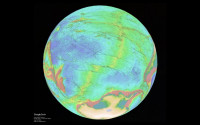Breadcrumb
News archives
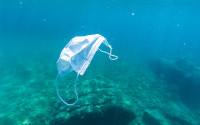
New Study Pinpoints Likely Path of COVID-Related Plastic Waste in the Ocean
Researchers use a new model to project where the surge of mismanaged medical waste will end up—including beaches, seabeds, and the Arctic Ocean
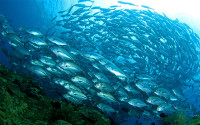
Better climate models predict worse outcomes for future marine ecosystems in our warming oceans
Results show continued high emissions “much worse” for marine life
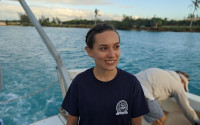
Scripps Student Spotlight: Nicole Adamson
Undergraduate student examines red blood cell activity in teleost fish
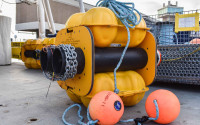
Dodging Hurricane Ida While Listening to a Changing Gulf
Supercharged storms, marine mammal movements have human influence as a common cause
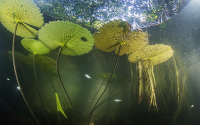
Hidden Mangrove Forest in the Yucatan Peninsula Reveals Ancient Sea Levels
Researchers investigate an ancient coastal ecosystem found more than 120 miles from the nearest ocean, revealing sea level impacts from the last interglacial period
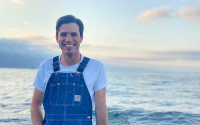
Scripps Student Spotlight: Alejandro Cano-Lasso Carretero
A Master of Advanced Studies student fuses art and science in order to understand the natural world
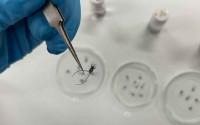
The History of Insects Living on the Open Ocean Tracks with the History of the Currents They Ride
Researchers uncover how climatic changes influence the evolution of ocean skaters
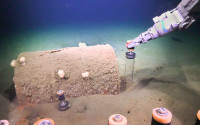
Scientists Explore Mineral-Rich Seafloor, DDT Dump Sites; Discover Methane Seep, Whale Fall
Exploratory dives off California coast in waste dumping grounds and areas of potential mining will advance understanding of human impacts on deep-sea ecosystem
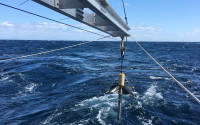
Researchers Observe Potential Impacts of Seafloor Mining
Team uses field data to create a model to show behavior of sediment plumes
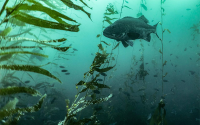
New Study Holds Promise for “Critically Endangered” Giant Sea Bass
Scripps-led study recommends new assessment of giant sea bass species using data from both sides of U.S.-Mexico border

Scripps Student Spotlight: Karina Halliman
Undergraduate focuses research on the health of marine ecosystems, from food webs in the Antarctic Peninsula to seabird populations along the U.S. West Coast
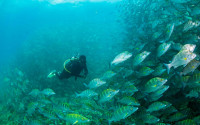
Mexico an Emerging ‘Beacon’ for Ecotourism Thanks to Pristine Dive Sites
Global degradation has made unspoiled ocean expanses scarce but lucrative destinations
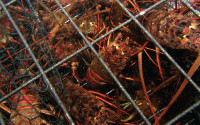
Extreme Climate Events Threaten U.S. Fisheries, Fishermen, and Coastal Communities
In the first-ever nationwide Federal Fishery Disaster database, scientists with Scripps Institution of Oceanography and The Nature Conservancy paint a startling picture foreshadowing disaster for domestic fisheries
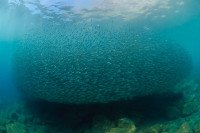
Overfishing As Significant as Environmental Factors as Cause of Sardine Fishery Collapse
Study offers a new way to predict sardine population shifts and a counternarrative to current understanding
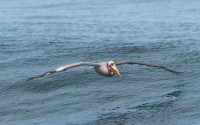
The Wave Beneath Their Wings
The intricate dance between waves, wind, and gliding pelicans is worked out for the first time
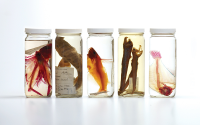
The Underwater Library at Scripps Institution of Oceanography
For decades, the Scripps Oceanographic Collections have amassed millions of marine organisms and geological samples, which continue to yield scientific discoveries long after their preservation

Scripps Student Spotlight: Ivan Moreno
A graduate student researches cyanobacteria and bacteria and their ability to adapt and thrive in extreme environments

Two Scripps Scientists Receive NSF CAREER Awards
Deirdre Lyons and Sarah Giddings receive prestigious awards that support early-career faculty
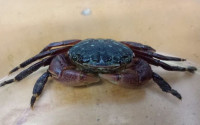
Parasite That Dissolves Crabs Discovered
Organism forms unique mouth-like structure, swims in crab blood

Scripps Student Spotlight: Kendall Chancellor
A graduate student analyzes the bleaching of coral reefs across Pacific Ocean
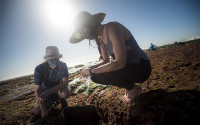
Revealing the Secrets of Seaweeds
UC San Diego researchers explore seaweed genome diversity in a first-of-its-kind project that could help solve societal challenges
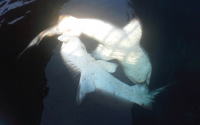
Breaking the Patrisharky: Scientists Reexamine Gender Biases in Shark and Ray Mating Research
New study analyzes biological drivers of multiple paternity in sharks and rays, challenging decades of unbalanced research
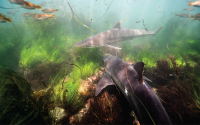
New Research Unlocks Mysteries of Soupfin Shark Migration and Reproduction
Tracking the U.S. population of soupfin sharks yields firsts for science, implications for management and conservation
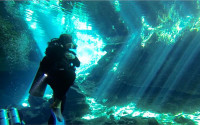
Scripps Student Spotlight: Mariela Rios
Graduate student seeks to find sustainability while promoting profitability for Veracruz, Mexico's sardine fishers
Pagination
Sign Up For
Explorations Now
explorations now is the free award-winning digital science magazine from Scripps Institution of Oceanography. Join subscribers from around the world and keep up on our cutting-edge research.
